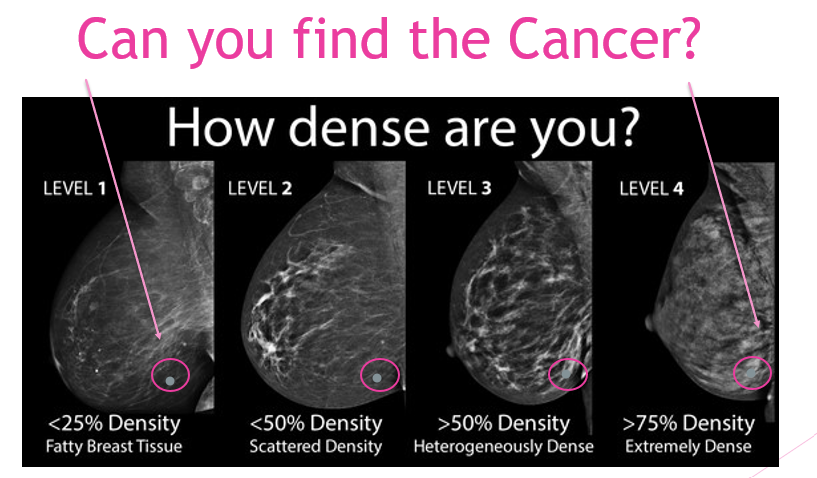PUBLISHED: 17th July 2025

In the fight against breast cancer, early detection saves lives. Yet for millions of women, one critical factor can make detection more difficult: breast density. Despite affecting nearly half of all women, dense breast tissue remains one of the most underrecognized and underdiscussed aspects of breast cancer risk and screening. That’s where Operation Breast Density steps in.
What is Operation Breast Density?
Operation Breast Density is a 501(c)(3) nonprofit organization committed to raising awareness about breast density and its impact on breast cancer detection and risk. The organization’s mission is twofold: to educate clinicians and the public on the importance of individualized breast cancer screening based on breast density and to provide financial assistance for supplemental imaging to women who otherwise cannot afford it.
Founded in 2022, the nonprofit has already made a measurable impact—hosting educational events, providing access to life-saving imaging, and raising tens of thousands of dollars to support underserved women across Michigan and beyond.
Why breast density matters
Breast density refers to the amount of fibroglandular tissue compared to fatty tissue in the breast, as seen on a mammogram. Women with dense breast tissue—estimated to be 40–60% of the female population—have two major challenges:
- Increased risk of developing breast cancer
- Reduced accuracy of mammograms, which can miss up to 40–50% of cancers in dense breasts
Dense tissue appears white on a mammogram—just like tumors—making it more likely for a cancer to be hidden or missed. Yet despite this, many women are not informed of their breast density, and even fewer have access to the additional imaging they may need, such as breast ultrasound or MRI.
The inspiration behind the mission: Dr. Shoshana Hallowell
Operation Breast Density was founded by Dr. Shoshana Hallowell, a board-certified general surgeon specializing in minimally invasive and robotic surgery, as well as breast, bariatric and trauma surgery. She practices at McLaren Lapeer Hospital in Michigan and has long been an advocate for breast cancer awareness.
In 2020, Dr. Hallowell’s work became personal when she was diagnosed with Stage 1 breast cancer. Despite being a surgeon herself, she was unaware of her own dense breast tissue and the risk it posed. That diagnosis—and the journey that followed—entirely changed her perspective.
Dr. Hallowell has since stated that becoming a breast cancer survivor has made her a more empathetic and driven physician. Her experience also revealed a major gap in patient education, access and screening guidelines. Motivated to create the change she wished had existed during her own journey, Dr. Hallowell founded Operation Breast Density just two years later.
What Operation Breast Density does
Operation Breast Density works at the intersection of education, advocacy and direct assistance:
Education
The organization offers community outreach and clinician-focused education, including:
- Public seminars and workshops
- Continuing education symposiums for physicians, nurse practitioners and other healthcare providers
- Educational materials on how to assess breast density and understand its implications for cancer risk and screening
Since its founding, Operation Breast Density has hosted three major Breast Cancer Screening Symposiums, reaching over 1,000 clinicians across Michigan and neighboring states.
Advocacy
Operation Breast Density actively advocates for:
- Policy change, encouraging legislation that mandates insurance coverage for supplemental imaging in women with dense breasts
- Updated screening guidelines that include dense breast tissue as a recognized risk factor
- Better communication between healthcare providers and patients about breast density and screening options
Financial Assistance
Perhaps most importantly, Operation Breast Density provides grants to cover the cost of supplemental screening—such as ultrasound and MRI—for women who have dense breasts and are either uninsured or underinsured.
In its first year, Operation Breast Density raised over $30,000 to support this initiative. These funds help ensure that women don’t have to choose between their health and their finances when it comes to detecting breast cancer early.
Community involvement and events
To support its mission, Operation Breast Density hosts a variety of fundraising and awareness-building events, including:
- An annual gala, featuring live and silent auctions, dinner and survivor celebrations
- A Yoga on the Lake fundraiser
- Educational speaking engagements at medical institutions and community centers
Each event not only raises critical funds but also serves as a platform to amplify the conversation about dense breast tissue—a topic that is still too often overlooked.

Looking ahead: A vision for change
Dr. Hallowell and the Operation Breast Density team are working toward a future where:
- Every woman knows her breast density status
- Every provider knows how to interpret breast density
- Every patient has access to the appropriate screening tools, regardless of income or insurance
The ultimate goal is to save lives by detecting breast cancer earlier and more accurately, especially in women with dense breasts, and improving overall survival rates through individualized, risk-based screening.
How you can help
Whether you're a healthcare provider, a breast cancer survivor, a patient advocate or simply someone who cares, you can support the mission of Operation Breast Density in several ways:
- Donate to help fund imaging for women in need
- Attend or sponsor an event
- Volunteer your time or expertise
- Spread awareness by sharing educational materials and encouraging others to learn about their breast density
For more information, resources or to donate, visit www.operationbreastdensity.org.
Together, we can close the gap in breast cancer detection and give every woman the chance to be seen—literally and figuratively.
POSTED IN: Risk Management , Health Equity And Disparities , Screening And Prevention , Partnerships , Featured Partner
TAGS: Early Detection , Mammogram , Health Equity , Breast Cancer Early Detection , Breast Screening , Partner , Breast Density
1 Comments
August 6, 2025
Yes!! I’ve been beating this drum for two years. Thank you so much!!
Sheila Miller
Reply